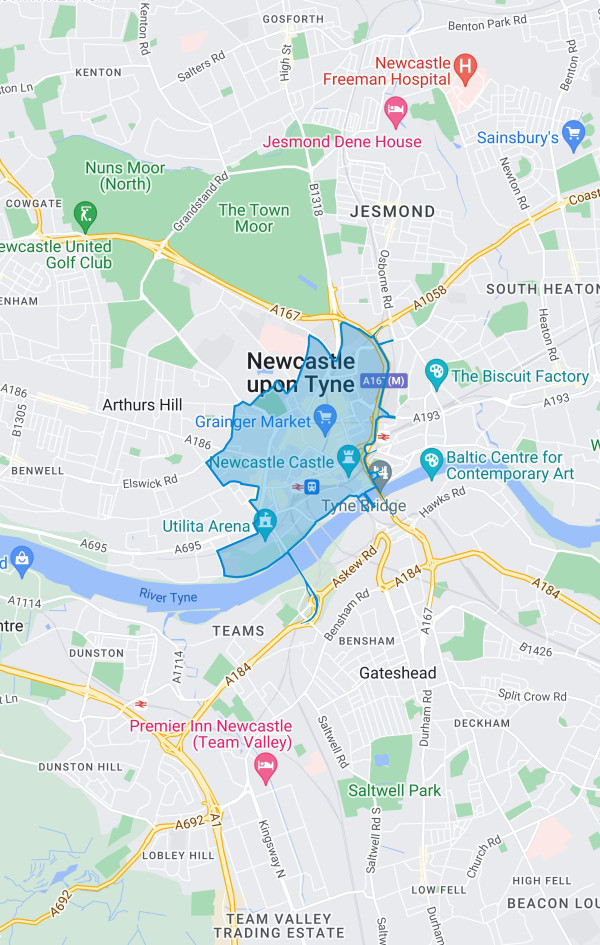


In order to meet the UK governments pledge to have net zero emissions by 2050, a number of cities in the UK are introducing Clean Air Zones (CAZ). Newcastle City Centre was the latest CAZ to go live in the UK on the 30th January 2023.
Clean Air Zones are designated areas in a city or town where drivers of more polluting cars may have to pay a fee.
Each local authority has agreed on slightly different rules and charges for their CAZ, in order to strike a balance between meeting the legal emissions target whilst remaining realistic for the drivers and organisations impacted. Many local authorities have also introduced temporary exemptions, discounts and grants in order to support those who are affected.
Read on to find out which cities have Clean Air Zones, where the zone is located, which vehicles will be subjected to the charge and how much they will have to pay.
Which UK cities are introducing Clean Air Zones?
Five UK cities have already introduced clean air zones:
There’s also a plan to introduce a clean air zone in Manchester, but this is currently under review.
The Tyneside Clean Air Zone went live on the 30th January 2023 and covers the majority of Newcastle City Centre. It also includes the bridge routes into the zone – the Tyne, Swing, High Level and Redheugh bridges.

Newcastle CAZ map - credit Google Maps
Newcastle and Gateshead have a class C clean air zone, which means that drivers of taxis & private hire vehicles, buses, coaches and HGVs that don’t meet the minimum emissions standard are subject to a fee.
Fees for LGVs that don’t meet the minimum emissions standard were introduced in July 2023.
Private cars and motorcycles will not be charged, regardless of whether they meet the minimum emissions standard.
Drivers will be charged the daily fee once per calendar day, regardless of how many times they enter the zone within that day. However, if drivers enter and leave before and after midnight, they will be charged twice.
The local authority are offering temporary exemptions for drivers who are in the process of upgrading their vehicle and have applied for a vehicle upgrade grant. You can apply for the exemption permit via Tyneside’s Breathe clean air website.


Bath’s Clean Air Zone has been in effect since the 15th March 2021 and covers Bath City Centre. The west boundary goes from and includes the high common and Royal Victoria Park, as well as Saint James cemetery over Lower Bristol road. The East boundary goes from the Kennet and Avon canal and also stretches up to King Edward school.
You can see the precise area on this map published on the Bathnes website as well as check whether a postcode is within the clean air zone.
Bath has a class C clean air zone, which means buses, coaches, taxis, private hire vehicles, heavy goods vehicles, vans and minibuses which don’t meet minimums emissions standards are subject to charges
Most cars (other than taxis and private hire vehicles) and all motorcycles do not need to pay a charge in Bath. Campervans, SUVs and four-by-fours will be chargeable if they have the vehicle class N1 – you can check this using the GOV.UK vehicle checker.
Exemptions are available for:
More information about applying for exemptions can be found on the Bath local authority website.
The Birmingham Clean Air Zone was introduced into Birmingham’s town centre on the 14th June 2021 under the campaign name Brum Breathes. The zone covers all roads within the A4540 Middleway, but not the Middleway itself.
You can view a map and check whether a postcode is within the boundary on the Brum Breathes website.
Birmingham has a class D clean air zone, which means that any cars and motorcycles that don’t meet the minimum emissions standard are subject to the charge as well as the buses, coaches, taxis, private hire vehicles, HGVs, heavy goods vehicles, vans and minibuses that don’t meet the standard.
The day runs from midnight to midnight – so if you travel into the zone before midnight and leave after midnight then you will have to pay for two days of travel.
The following vehicles are exempt Birmingham’s clean air zone charge:
You also don’t have to pay the charge if:
The local authority initially offered temporary exemptions to commercial vehicles and those who worked within the Clean Air Zone, as well as exemption permits for those who lives within the clean air zone - however these exemptions ended on 31 May 2022 and 31 May 2023 respectively. They are offering a vehicle scrappage and travel credit scheme to those who work within the zone and have owned their car since 2018.
Bradford’s Clean Air Zone launched on the 26th September 2022 under the campaign name Breathe Better Bradford. It covers the areas within the A6177 ring road as well as the Aire Valley Corridor, Shipley and Saltaire. It includes Bradford Road and Canal road within the boundary.
You can check whether your route falls within the CAZ using their map here.
Bradford has a class C clean air zone, which means that HGVs, LGVs, vans, buses, coaches and taxis that do not meet the minimum emissions standard may have to pay the charge.
Class C zones mean that private cars and motorcycles will not have to pay the charge, regardless of their emissions.
Bristol’s Clean Air Zone went live on the 28th November 2022, under the campaign name Clean Air for Bristol. The CAZ covers the city centre and includes the A3029 Brunel way, A370 Coronation way, York road and Temple Way within the boundary. Bristol City Council has also chosen to include the Cumberland Basin and Portway within the zone, to help ensure the air quality falls within the legal limits at a quicker rate, as these are major routes into the city.
Bristol has a class D clean air zone, which means that private cars, taxis, LGVS, HGVs, buses and coaches are subject to the charge, if they don’t meet the minimum emissions standard.
Motorcycles are not included, and so drivers of motorcycles do not have to pay a fee.
There are some local discounts and exemptions available, which can be applied for on the Bristol local council website.


Portsmouth launched its Clean Air Zone on the 29th November 2021, as part of their campaign Cleaner Air Portsmouth. The zone is in the south west of Portsmouth and goes from (but does not include) the A2047 Kingston Road and Fratton road up until Portsmouth Harbour. Portsmouth Harbour is included within the boundary. Market Way, Hope Street, Winston Churchill avenue and Cambridge road are also included within the zone.
Portsmouth has a class B Clean Air Zone, which means that only the larger vehicles – HGVs, buses, coaches – and private hire vehicles & taxis are subject to a charge.
Drivers of LGVs, vans, private cars and motorcycles do not have to pay a charge to enter the Clean Air Zone, even if the vehicle does not meet the minimum emissions standard.
There are some local exemptions and discounts available, which you can apply for on the Cleaner Air Portsmouth website.
Sheffield’s clean air zone went live on 27 February 2023. The CAZ covers the A61 inner ring road ( including upper hanover street, Sheaf street and St Mary’s gate) and the city centre.
You can check whether your destination’s postcode is within the zone on their map here.
Similar to Bradford and Bath, Sheffield has a class C clean air zone, which means that HGVs, LGVs, vans, buses, coaches and taxis that do not meet the minimum emissions standard may have to pay the charge.
Private cars and motorcycles will not have to pay the charge in Sheffield, regardless of whether they meet the emissions standard or not.

If you want to install Workplace electric vehicle chargepoints, our specialist team can help you every step of the way.
Enquire now

